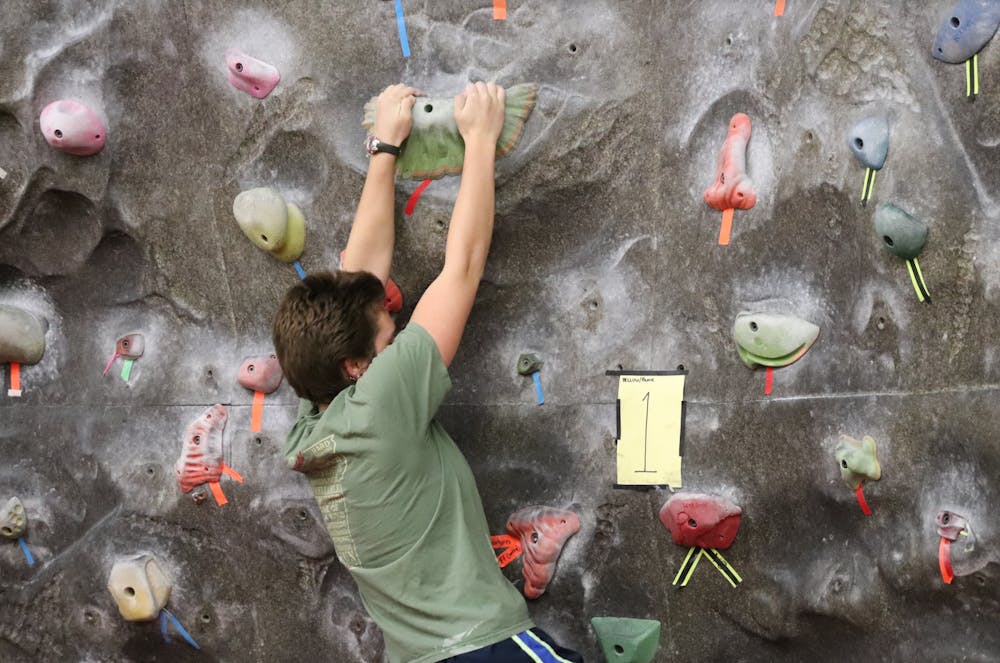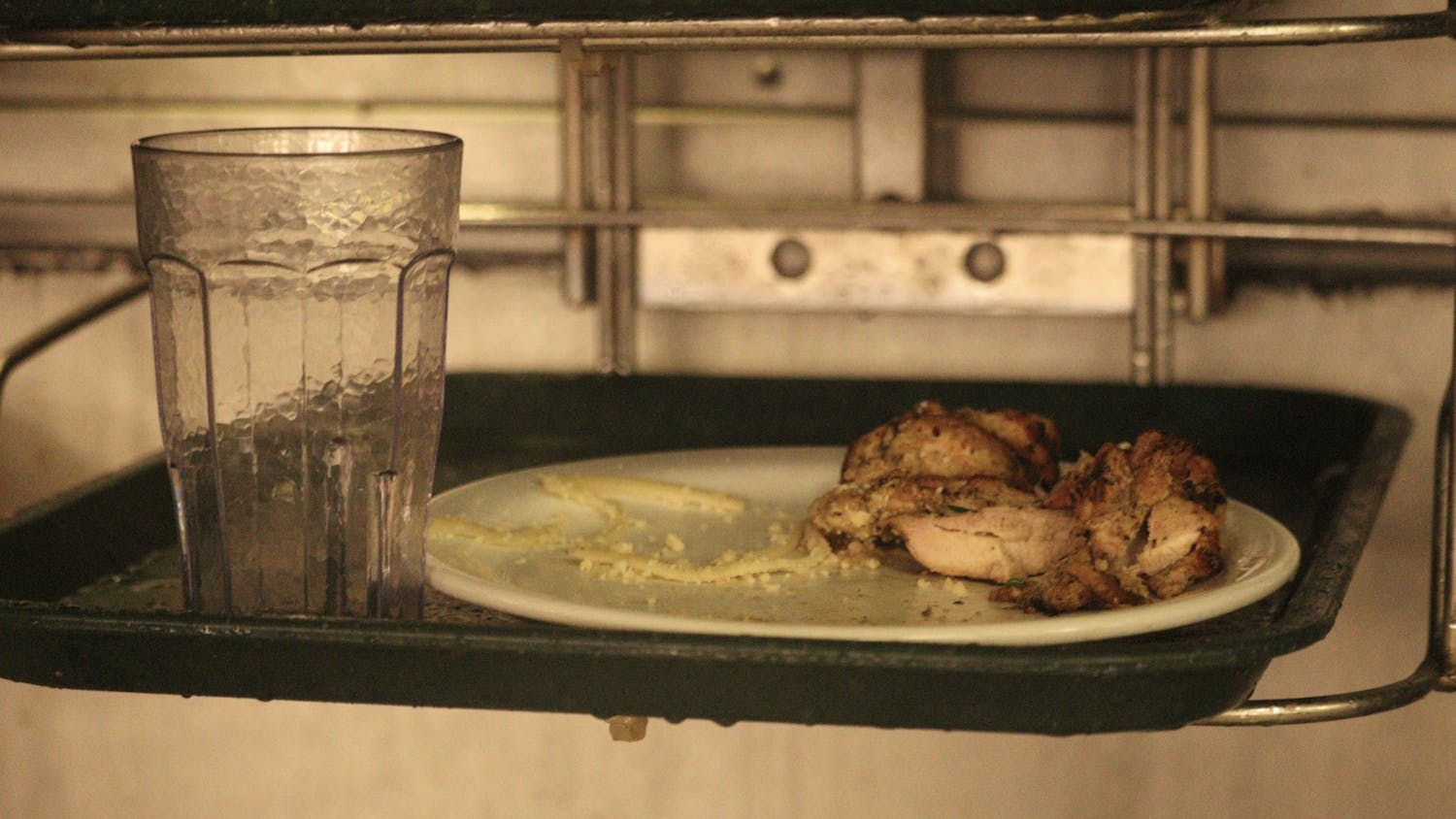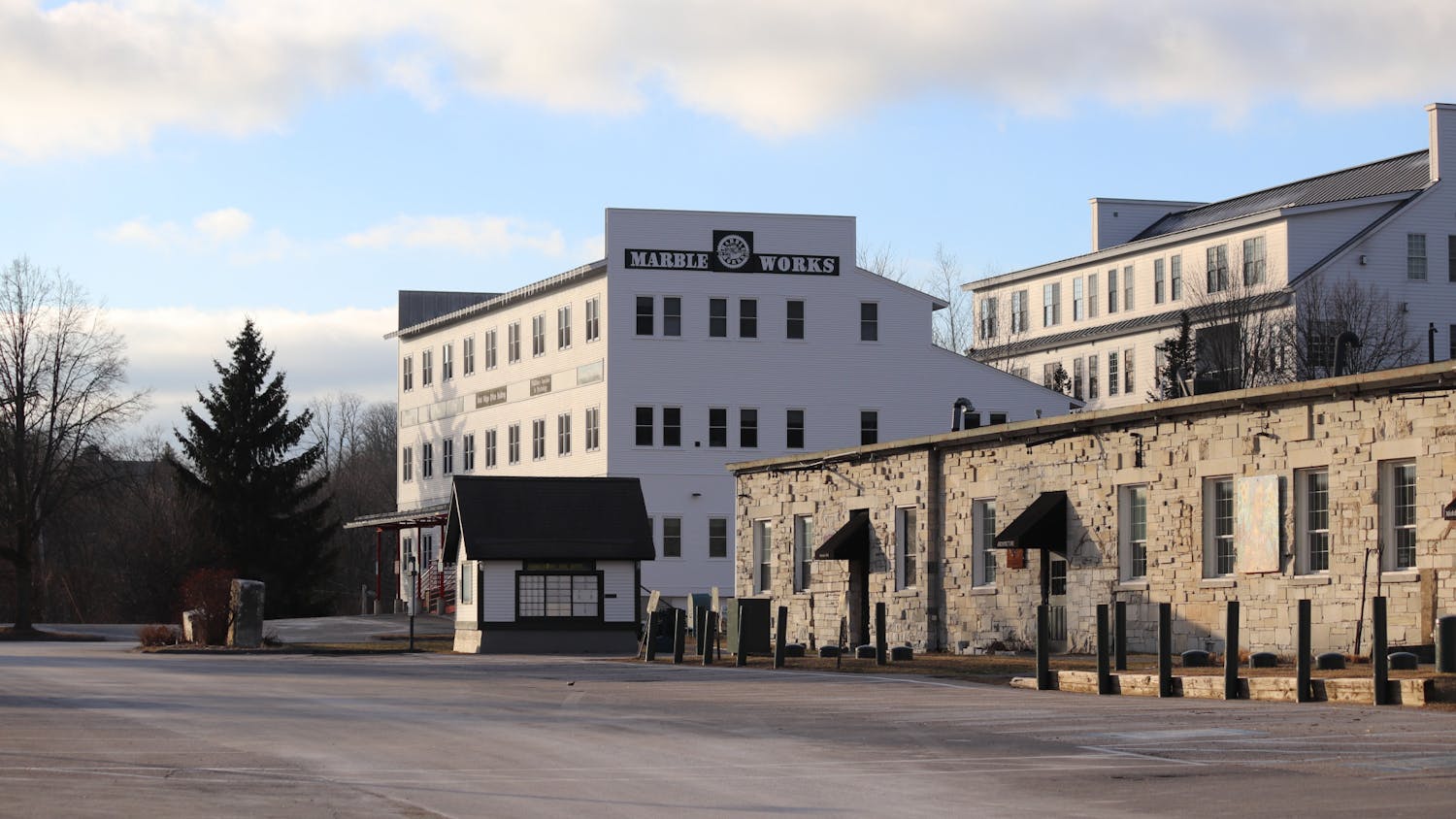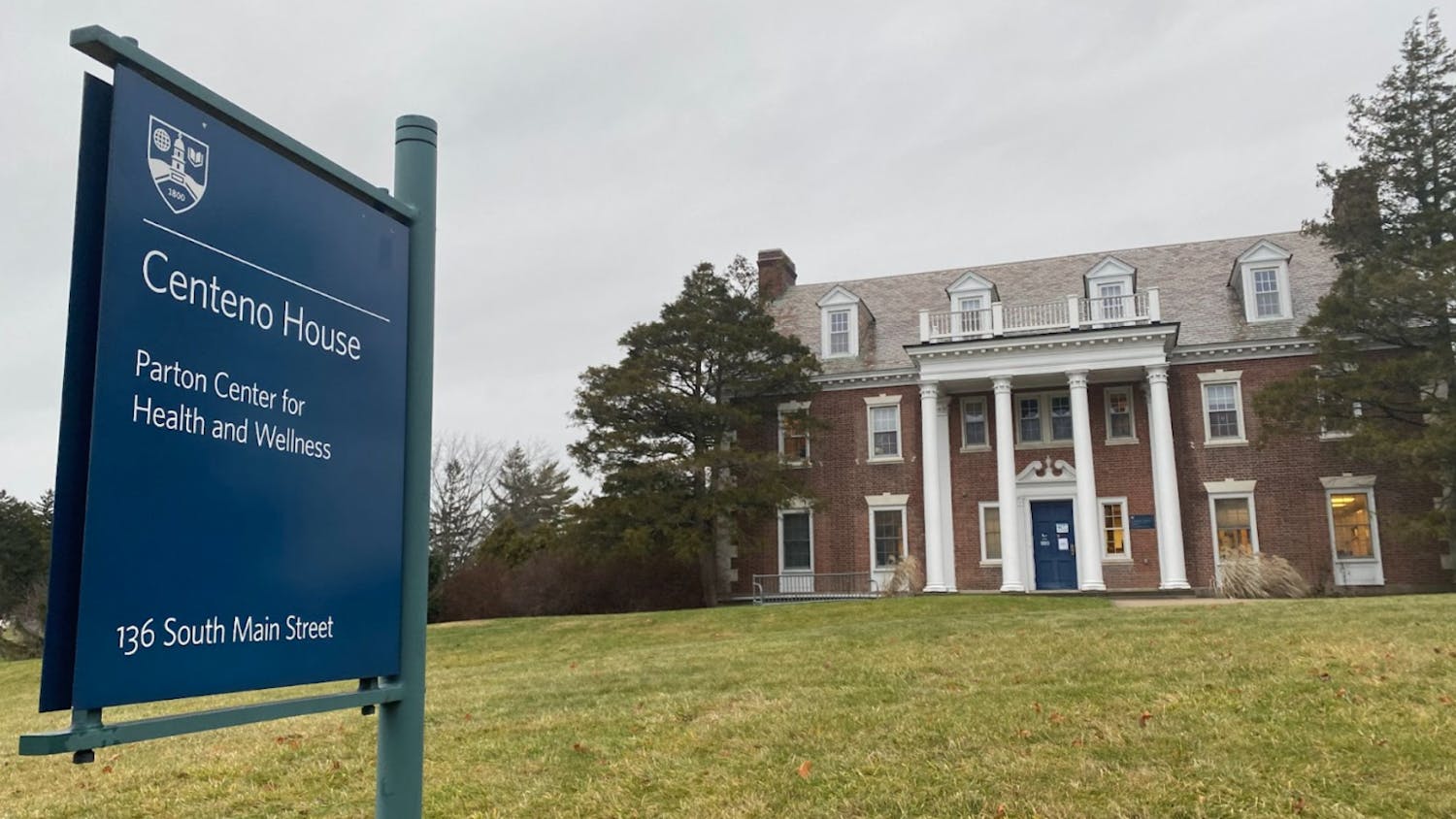Hidden in a small loft above the indoor tennis courts, the Middlebury climbing wall is an unassuming and homely place. The loft is crowded — covered in climbing pads, equipment and furniture that the students who manage the space have scavenged from the recycling center. But at 4 p.m., the wall comes alive. Dozens of students file up the stairs into the tiny loft, filling the already cramped space with bodies and a unique manner of excitement that we have only been able to find within the Middlebury climbing community.
Our wall is special. It’s special because the community of climbers works uniquely hard to keep it operational. There are a lot of challenges that come with maintaining the space and community centered around it; the wall is small, old and short-staffed. Since its inception, Middlebury climbing has been continuously overlooked and underfunded by the college. Given the popularity of climbing within recent months, that fact has to change.
Since the wall reopened after the pandemic, climbing has become an overwhelmingly popular activity within the student body. The GroupMe has over 500 members, over 600 students visited the wall since the start of the fall semester and nearly 400 of those who visited made a return. Club membership rates have significantly risen over the past years, and so has the frequency of visitors to the wall. On any given weekday, one could find it packed with students lined up to work on a route that might be troubling them, training for their future climbing plans or gathering in the space to socialize. The community that climbing provides here is strong. We’ve made a large number of friends from climbing at the wall, and we can say confidently that the community it provides has been formative in our Middlebury experiences. It functions in that way for many other students too. And it’s not just students that come to climb on our campus — the wall also attracts professors, alumni and people within Addison County who would otherwise not be connected to campus or the student body. The Middlebury climbing wall is the only space for indoor climbing within an hour’s drive. If not for the Middlebury wall, climbing would be inaccessible to many of these groups.
And, of course, we believe that making climbing accessible is an incredibly important thing — because the sport historically hasn’t been inclusive. Climbing started gaining popularity among niche groups of outdoor enthusiasts in the mid-twentieth century. At that time, and for many decades after it, climbing was a white, male-dominated sport that required people to dedicate themselves to climbing outdoors and the dangers that came along with it. The development of indoor climbing and the popularization of the sport from an activity that only a small subculture could access to one with its own olympic event has allowed a more diverse group of people to climb.
However, the sport and wall still have a long way to go until it can feel truly inclusive. Bringing climbing to everyone with an interest in the sport has been the focus of the Middlebury Climbing Club because we believe that climbing can inspire important, positive change.
Although far from perfect, the wall at Middlebury makes climbing more accessible than nearly anywhere else. Entrance is free, far cheaper than a $20 student day pass to any other gym nearby. Gear, from shoes to ropes, is available to borrow while using the wall’s services. Under leadership from interim Director for Outdoor Programs and Club Sports Rich Connell, help from the staff at the Student Activities Office, and motivation from the Climbing Club, the space has been able to replace gear and upgrade the training facilities. In fall 2021, the space even gained two new free standing units, but they are limited in usefulness for the majority of Middlebury’s climbers, with only a handful of students taking advantage of this equipment. Even with the positives of Middlebury’s wall, there are still issues needing to be addressed.
As climbing gains popularity, crags and gyms are nearing capacity. Middlebury’s wall is no different. We are struggling to keep up with demand with insufficient staffing and deteriorating infrastructure. The wall was built in 2001, and although we affectionately refer to it as “janky,” it seriously needs a refresh. Our setters struggle to add more holds to the wall after two decades of stripping the bolt holes. The style it's built around is nowhere to be found in gyms around the world. With the present popularity, the wall ranges from claustrophobic to intimidating for new climbers. It’s time we consider the positive impact the wall has had and could continue to provide the community of Middlebury. We would love to see the wall expand into, say, the new student center, but we also recognize that this addition may not come to fruition very soon. At the very least, we believe our humble wall deserves a retrofit like new paneling, to give our setters the ability to really set on the wall. Additionally, it’s key that we gain more funds to pay monitors and expand hours in order to curb the density of climbers during open-hours. With these changes, the wall can live up to its full potential as a place for the community and students to engage, exchange knowledge, socialize, exercise and gain strength.
The climbing club has been trying to channel the passion the Middlebury community has for the sport, but there are many issues with the wall as is. Even with all of the wall’s current problems, it’s loved — a testament to the enthusiasm for climbing in the campus community. We know that climbing has the ability to create so much positive change. It’s time that the college recognizes it as well, so that we can build the space and community that Middlebury climbing deserves.
Katherine Michaelson is a member of the class of 2025 and the treasurer of the Middlebury Climbing Club. David Goldsmith is a member of the class of 2023.5 and the president of the Middlebury Climbing Club.

Katherine Michaelson '25 (she/her) is a Multimedia and Layout Editor.
Her major is international and global studies focusing on East Asia. She studies Mandarin at Middlebury and spent the last summer at Chinese language schools. Last year, she was a Narrative Journalism Fellow for the Middlebury Magazine. She also currently serves as a co-president of the Middlebury Climbing Club.




